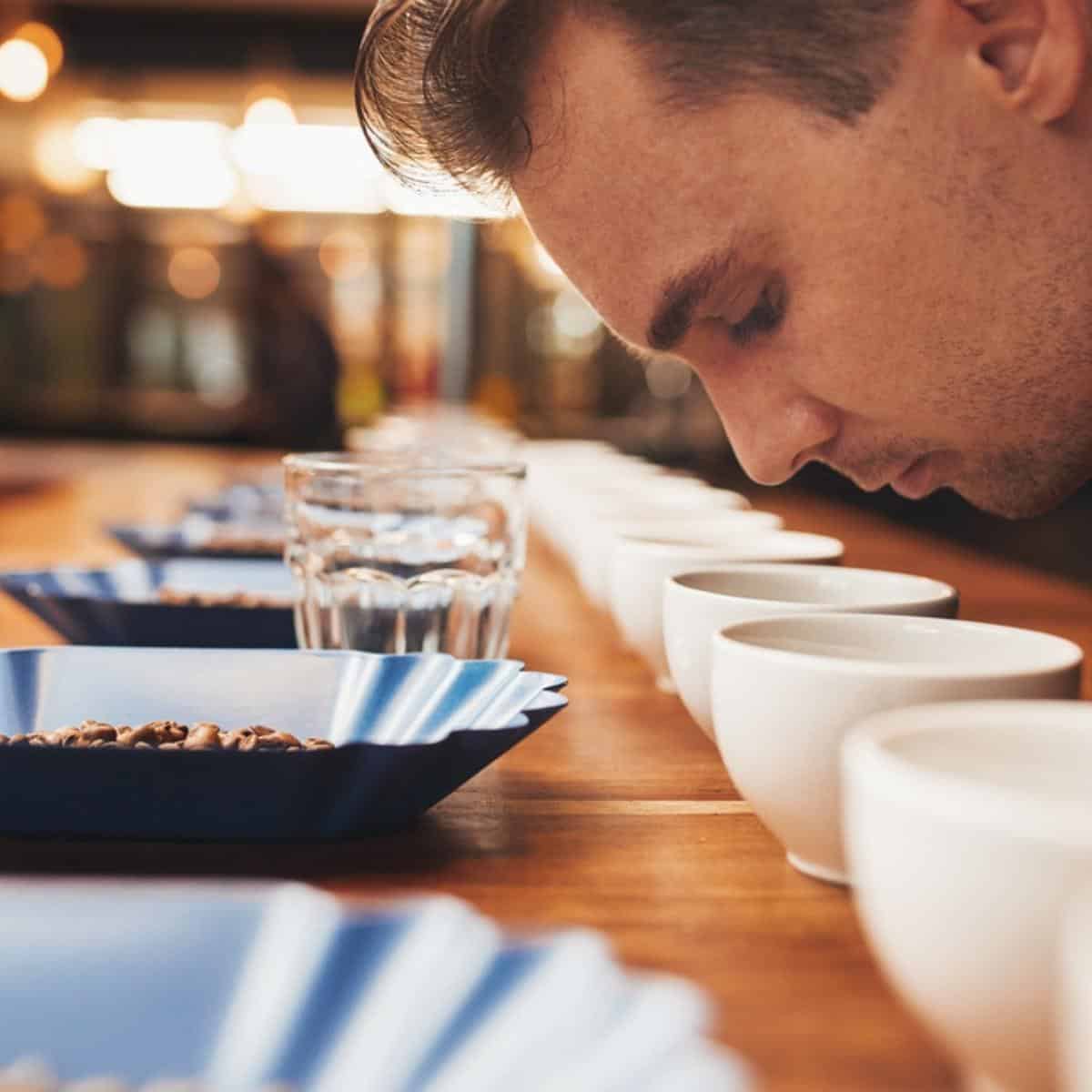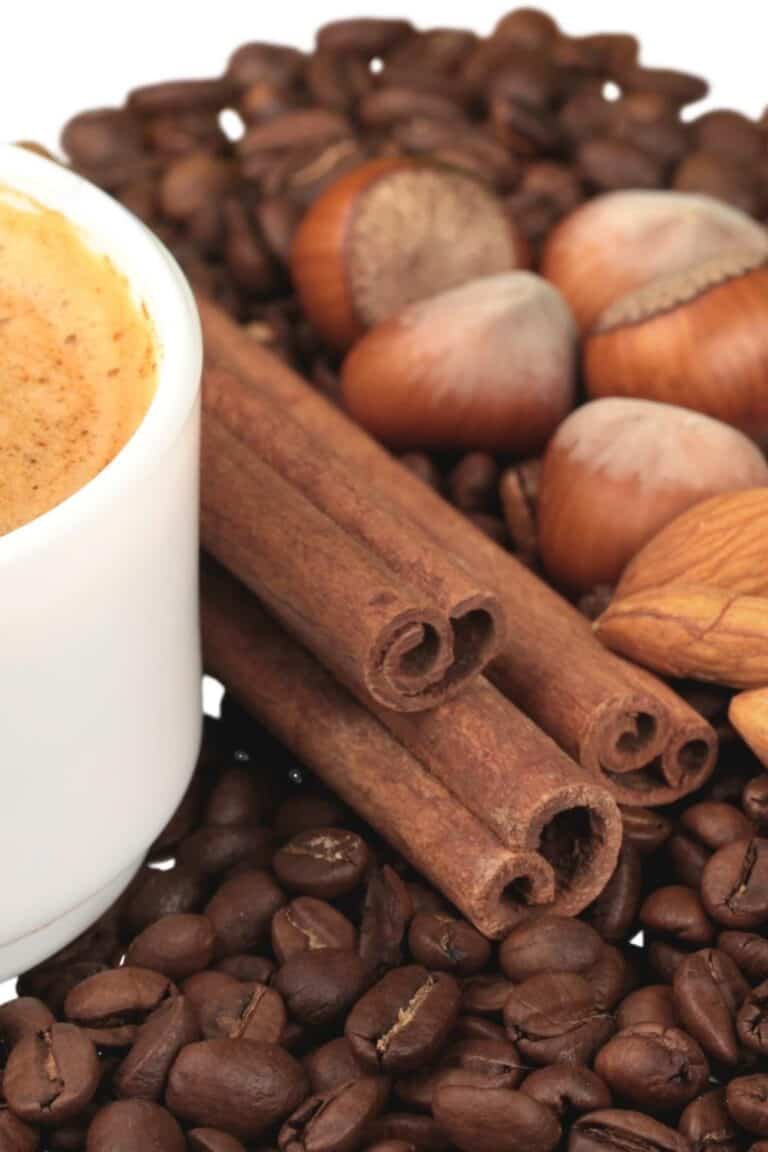What is Coffee Cupping – The Ultimate Beginner’s Guide to Coffee Cupping at Home
Have you heard the term “coffee cupping”?
Cupping sessions are a great way for coffee professionals and enthusiasts alike to evaluate quality. However, coffee cupping for the first time can be intimidating especially if you’re a newcomer to this world of expertise!
What is Coffee Cupping and How the Practice Began
Similar to how a sommelier tastes wine to analyze the notes and characteristics in wine, coffee cupping is an art that can be quantified. It’s used to analyze coffee samples, from their overall quality all the way down to each individual characteristic (such as acidity or body) and specific flavor notes found in different coffees!
It is just one of many ways to taste coffee, but it’s a very efficient way to compare different coffees side-by-side.
At a cupping session, (whether at an event or coffee cupping at home) there will typically be a variety of samples. The samples might be coffee from the same origin but from different farms or they could represent different varieties of bean or processing methods. They may even be from different countries. The variety of samples is useful to know when you are looking to buy coffee, or are simply interested in expanding your knowledge and experience.

Cupping is a relatively simple process but takes practice to master. The original intention behind cupping coffee was so that tested samples could be free from defects, but the specialty coffee industry has adopted this technique for its ability to describe flavors and characteristics in great detail.
It is said that cupping began in the late 1800s when merchants would taste various coffees to decide which ones they wanted to purchase to sell in their own establishments. This practice also helped ensure the consistency and quality of each cup and batch.
In 1999, judges at the Cup of Excellence competitions started to use cuppings to grade entrants, which led to the formation of the Specialty Coffee Association of America (now known as the Specialty Coffee Association, SCA). The association created guidelines that have since been widely accepted by the international specialty coffee community.
The coffee industry uses cupping today in much the same way that merchants did back when they would assess a bean’s characteristics and make purchasing decisions. Cupping allows for standardized methodology, which can be used anywhere with understandable criteria – it’s an international language!
Cupping isn’t just about purchasing decisions and quality control: it can also be used to determine ideal roast profiles, brewing methods, or simply learn more about your favorite beverage.
When you think about what is coffee cupping, you now know that cupping is a fun way to get creative with your coffee. The process of cupping allows you to gain an intimate knowledge about what makes each individual sample unique, which in turn creates better insights for showcasing its best features and attributes.
Coffee cupping at home allows you to determine your preferences for brewing as a pour-over or espresso, for example.
Coffee Cupping at Home: A How-To Guide
The cupping process is simple, but it’s important to be prepared and control all variables. You want your notes to reflect the differences in coffees not how you’ve prepared the samples- which means having consistent preparation techniques will give better results overall.
Step-by-Step Guide to Coffee Tasting at Home
Gather Your Supplies
- Scale
- Grinder
- Water (we recommend bottled water)
- Kettles
- Cups or bowls
- Spoons
- Timer
- Towels
- Writing utensil
- Cupping forms
- Coffee spittoons
- Plenty of counter space or table area
The SCA recommends a well-lit and spacious room that’s quiet, and free from any aromas. During cupping sessions, the environment should be calm so participants can give their full attention to what they’re doing without distractions or interruptions.
The consistency in equipment is vital for ensuring cupping accuracy. The SCA recommends that all cups are of similar dimensions and volume, as well as ceramic or glass material to retain the same level of heat during the extraction process as well as consistent ratios between water-to-ground coffee grounds mixture.
Understand the Cupping Evaluation Form
While the SCA cupping form is widely used, you may find other types of cupping evaluation forms both online and at a local cupping event.
A coffee cupping session is an opportunity for you to learn more about what makes good quality coffee and determine your own preferences. The evaluation form will help guide your judgment and ensure that each criterion has been considered.
Before you enter a cupping session or try one at home, make sure you have familiarized yourself with the evaluation form you are using. Do you know what to look for? What does each criterion mean? How will you score them?
For a more detailed explanation of each criterion found on a cupping evaluation form, we recommend RoyalNY’s in-depth instructions.
Prepare Your Samples
The methods for preparing your samples will vary depending on the coffee cupping protocol you use. You can find detailed instructions for the SCA protocols here. For protocols by other organizations or companies, look for links on their website for specific methods they recommend.
First, you need to purify your samples by removing any old or unwanted coffee. To do this effectively with precision weights and measures requires a few grams from the ground beans you will use for your first tasting. 12 grams of coffee into each seven-ounce cup is recommended.
The coffee should be ground individually and multiple samples prepared to ensure consistency.
It’s crucial that you control all variables when making coffee. For example, grind size and water temperature both play important roles in determining the quality of your cup, as well as the ratio of coffee to water.
The evaluation of the coffee should start even before the beans have been ground. Smell them and note any aromas you detect.
Then add the water for a maximum of 15 minutes after grinding the coffee beans.
We recommend filling the cups with 200 F water and allowing the coffee to brew for four minutes. At four minutes, break the “crust”. This is the grounds at the top of the coffee. Use a spoon for this and stir the coffee. As you do, take in the aroma of the flavor components.
You may also want to try an actual cupping spoon made for this purpose. A cupping spoon has a similar shape as a soup spoon but is slightly deeper. This is so that the taster can drink enough coffee at once in order to taste all of its qualities.
Once you have broken the crust, skim off the thin top layer of foam, consisting of the smallest, floating particles of ground coffee.
Once skimmed, wait until the coffee is cool enough to taste.
Taste the Coffee
The SCA recommends that you leave your coffee samples alone for 3–5 minutes, but some people prefer to let them steep longer. The important thing is keeping time consistent throughout the steeping process.
Next, dip your spoon into a clean rinse cup with hot water then dip your spoon into the tasting cup of the coffee you are sampling.
It is suggested that you not let old-fashioned manners push you to quietly sip the samples. Slurping is typically done to increase the flavor and aroma perception.
Before and after dipping your spoon into a sample, make sure to rinse it again into your rinse cup to prevent cross-contamination of samples.
To get the most out of your coffee tasting experience, sample each cup as many times as you wish and make notes on what you observe.
Comparing Samples Helps to Discover Coffee Flavor Nuances
While many people think they probably won’t be able to taste anything and are surprised to find how different coffees can actually differ in flavor when comparing them.
Focus on the subtle differences in flavor that make each type of coffee unique.
The nutty and chocolatey flavors will be present, but there may also be notes like berries or fruit coming through as well.
Coffee has an endless supply of flavor, as each harvest is different. The most important factors in determining the flavors your cup will have are weather and altitude, but it’s also determined by soil type, and the cultivar variety that was planted during the seedling development stage – all these things come together to create what you taste when cupping coffee!
Coffee beans from around the world vary in their flavor depending on where they’re grown. Kenyan Arabica coffee has notes of blackcurrant, while Ethiopian coffees are floral and delicate. After picking, these coffees will be affected by many other factors, as well, including processing, roasting, transporting, roasting, grinding, and even the water and brewing equipment used.
How to Avoid Common Coffee Cupping Errors
Professional cuppers recommend spitting out your cupping samples into separate cups or spittoons because taking in larger amounts of caffeine can have unwanted short-term effects on the body and can also start to change your palate, affecting your ability to pick up delicate aromas and flavors.
Coffee cupping is a technique that relies on the expertise and experience of an individual. The most important thing to remember about cupping, though it may seem overwhelming at first glance for those who are unfamiliar with this process – just focus on consistency! Over time your familiarity will develop as you become more comfortable with the vocabulary and your own terms and methods for describing common notes.
How to Improve Your Coffee Cupping Skills
The best way to improve is to keep practicing your cupping skills. Cupping with others is always better than cupping alone, too. You’ll learn as much by observation and repetition, as from reading or watching videos on the internet!
By discussing various techniques, methods and sensory perceptions with others, you can help to hone your skills or expand your coffee vocabulary.
You can learn about the taste nuances in coffee by studying industry resources. Review the World Coffee Research Sensory Lexicon or, have on hand the SCA’s Coffee Taster’s Flavor Wheel. Both of these coffee industry resources will help the novice coffee cupper in describing the different levels and detail of the aromas, flavors, and textural qualities that we find when tasting coffee.
Don’t get lost in the minutia of the tasting, however. You can even exercise your palate when you’re not tasting coffee by thinking about it. Consider the sweetness, acidity, body, and aftertaste. Once you have mastered those, you can hone in on more specific flavor nuances.
And, most importantly, keep practicing your coffee cupping at home! So, what is coffee cupping and how can you do it at home? Coffee cupping is the practice of smelling and tasting different coffees to evaluate their quality. It’s a great way to learn about different flavor profiles and find your favorite coffees.
To try coffee cupping at home, all you need are a few supplies and some coffee beans (We, of course, recommend our own specialty coffees roasted to order!). We’ve provided a few tips to help make your experience more enjoyable and informative.
Have you tried coffee cupping at home? What was your experience like? Let us know in the comments below!


